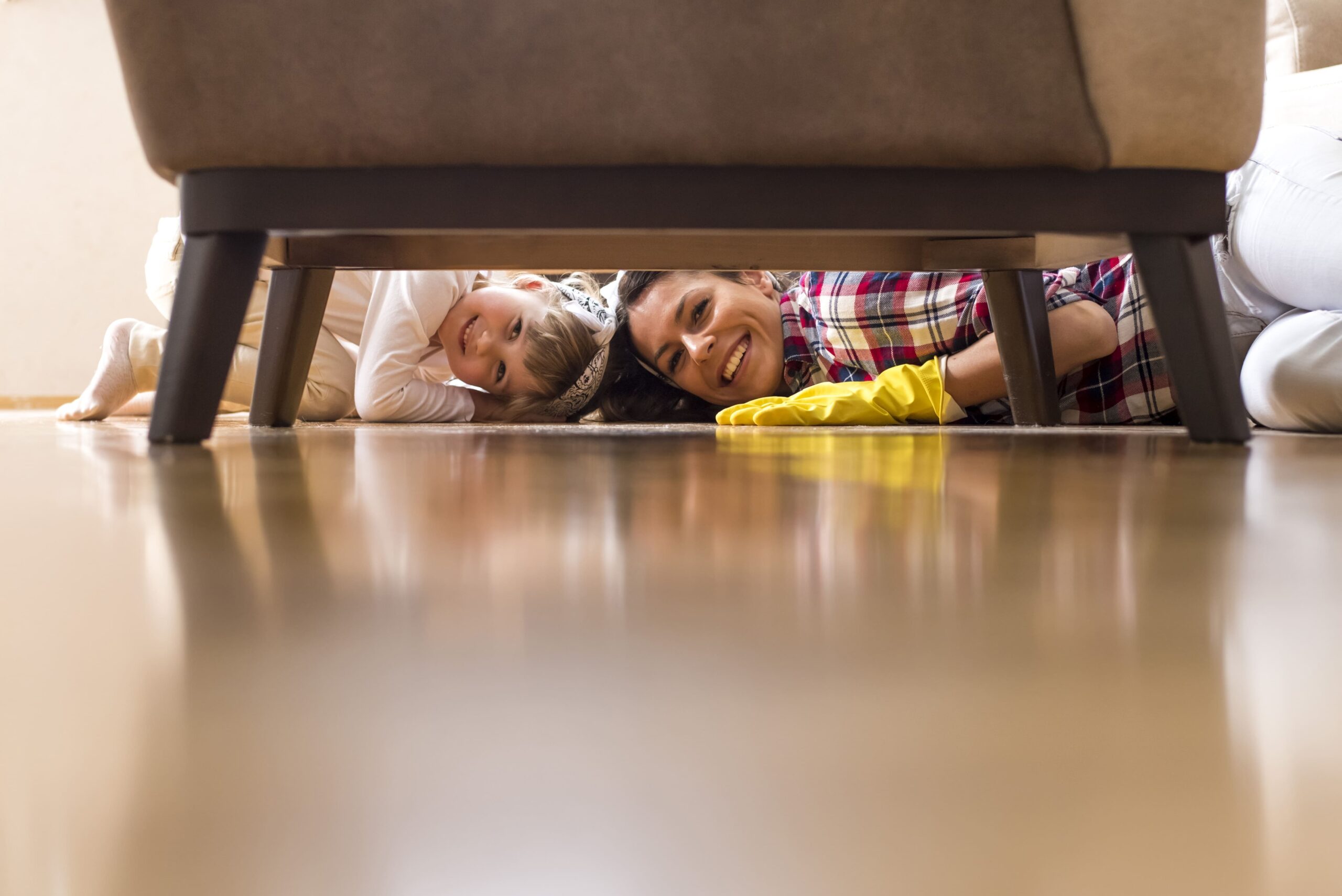Maintaining clean floors is essential for preserving the beauty and longevity of your flooring, regardless of the material. Each type of flooring—be it vinyl, laminate, hardwood, or tile—requires specific cleaning techniques to ensure that it remains in excellent condition. This comprehensive guide will walk you through the best cleaning practices for various types of flooring, with a particular focus on vinyl and laminate flooring, which are renowned for their affordability, durability, and ease of maintenance.
Vinyl Flooring Cleaning Guide
Vinyl flooring has become a popular choice among homeowners for its resilience, versatility, and aesthetic appeal. It’s especially favored in areas with high foot traffic or where spills are common, such as kitchens, bathrooms, and entryways. One of the key advantages of vinyl flooring is how easy it is to clean and maintain, making it a great option for busy households.
Daily Cleaning
To keep your vinyl flooring looking its best, it’s important to perform regular daily cleaning. Sweeping or vacuuming the floor is the most effective way to remove dust, dirt, and debris that can accumulate over time. When using a vacuum, ensure that it is designed for hard floors and avoid using a beater bar, as this can scratch the surface of the vinyl.
For quick clean-ups, a dry microfiber mop is also an excellent tool. It picks up fine particles without leaving any residue behind. If you encounter any spills, it’s crucial to wipe them up immediately to prevent staining or damage to the floor.
Weekly Maintenance
In addition to daily cleaning, vinyl floors benefit from a more thorough cleaning once a week. For this, you can use a damp mop along with a mild, non-abrasive floor cleaner. A simple and effective homemade cleaning solution can be made by mixing a few drops of dish soap with warm water. When mopping, it’s important to avoid using excessive water. Vinyl flooring is water-resistant, but pooling water can seep into seams and cause the adhesive to weaken over time.
After mopping, it’s a good practice to rinse the floor with clean water to remove any soap residue that might cause the floor to become slippery or dull its shine. Finally, dry the floor with a microfiber cloth or a dry mop to prevent streaks and water spots.
Deep Cleaning
Every few months, or whenever you notice that your vinyl floor is starting to lose its luster, a deep cleaning session may be necessary. For this, you can use a mixture of one cup of apple cider vinegar and a gallon of warm water. Vinegar is a natural cleaner that breaks down dirt and grime without leaving a buildup on the floor.
To perform a deep clean, mop the floor with the vinegar solution, making sure to work in small sections to avoid letting the solution sit too long on the surface. For stubborn stains or areas with heavy foot traffic, you can apply the vinegar solution directly to the stain and scrub gently with a soft-bristle brush. Afterward, rinse the floor with clean water and dry it thoroughly.
Pro Tip: Avoid using harsh chemicals, abrasive cleaners, or wax on your vinyl flooring. These products can damage the protective layer of the floor, leading to discoloration or a dull finish. Always check the manufacturer’s guidelines for cleaning and maintenance to ensure you’re using the appropriate products and techniques.
For more information on vinyl flooring options and care, visit MMY Flooring, where you can explore a wide range of vinyl flooring styles and colors.
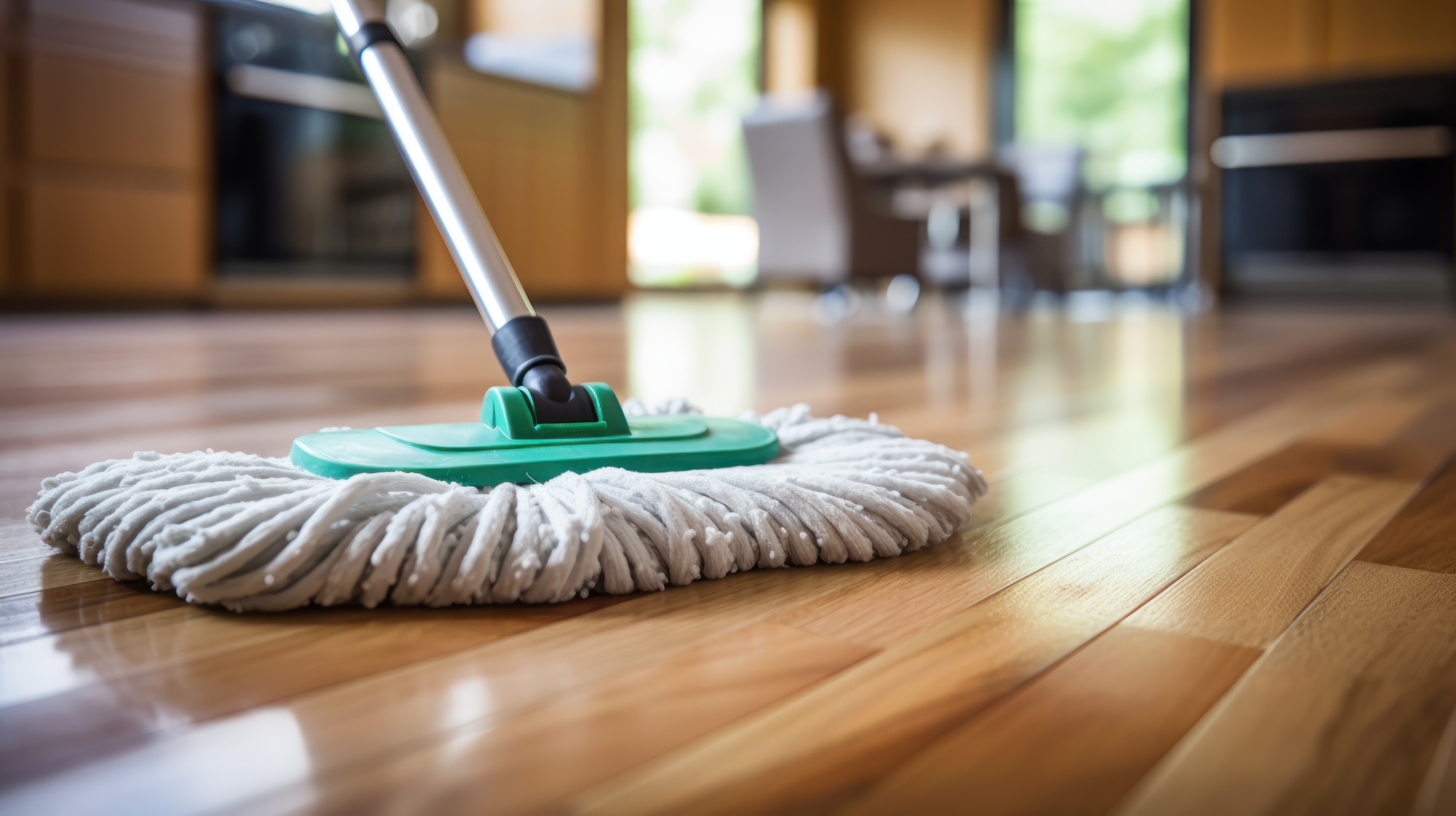
Laminate Flooring Cleaning Guide
Laminate flooring is a popular choice for homeowners who want the look of hardwood or stone without the associated cost. Laminate is durable and easy to install, but it does require specific care to maintain its appearance over time. Proper cleaning is essential to prevent damage and ensure that your laminate floors stay looking new.
Daily Cleaning
Like vinyl, laminate flooring benefits from regular daily cleaning. Sweeping or vacuuming the floor is essential to remove dirt and debris that could scratch the surface. When vacuuming, use a hard floor setting or an attachment designed for laminate floors to avoid damaging the finish.
A dry dust mop is another excellent tool for daily cleaning, as it can pick up fine dust particles without leaving any streaks. It’s also important to promptly clean up any spills to prevent moisture from seeping into the seams, which could cause the laminate to swell or warp.
Weekly Maintenance
To keep your laminate floors looking their best, a weekly cleaning routine is recommended. For this, use a damp mop and a cleaner specifically designed for laminate flooring. Avoid using excessive water, as laminate is sensitive to moisture. When mopping, wring out the mop thoroughly so that it is only slightly damp, and mop in the direction of the planks to prevent streaks.
If you prefer a homemade solution, you can use a mixture of equal parts water and white vinegar. This solution is effective for removing dirt and grime while also helping to disinfect the surface. However, be sure to test this solution in a small, inconspicuous area first to ensure that it does not cause any damage or discoloration.
After mopping, use a dry microfiber cloth or a dry mop to remove any remaining moisture and prevent water spots. This step is particularly important in areas with high humidity, as moisture can cause laminate floors to expand.
Stain Removal
While laminate flooring is resistant to most stains, accidents can still happen. For spot cleaning, use a soft cloth dampened with a laminate cleaner. For tougher stains, such as paint, nail polish, or ink, you can use a small amount of acetone or nail polish remover on a clean white cloth. Gently rub the stain, being careful not to over-saturate the area, and then wipe the area with a damp cloth to remove any residue.
Pro Tip: Never use abrasive cleaners, steel wool, or wax on laminate flooring. These products can scratch the surface and cause permanent damage. Additionally, avoid using steam cleaners, as the moisture and heat can compromise the integrity of the laminate.
If you’re considering new laminate flooring, or need more advice on how to care for your existing floors, explore the options available at MMY Flooring.
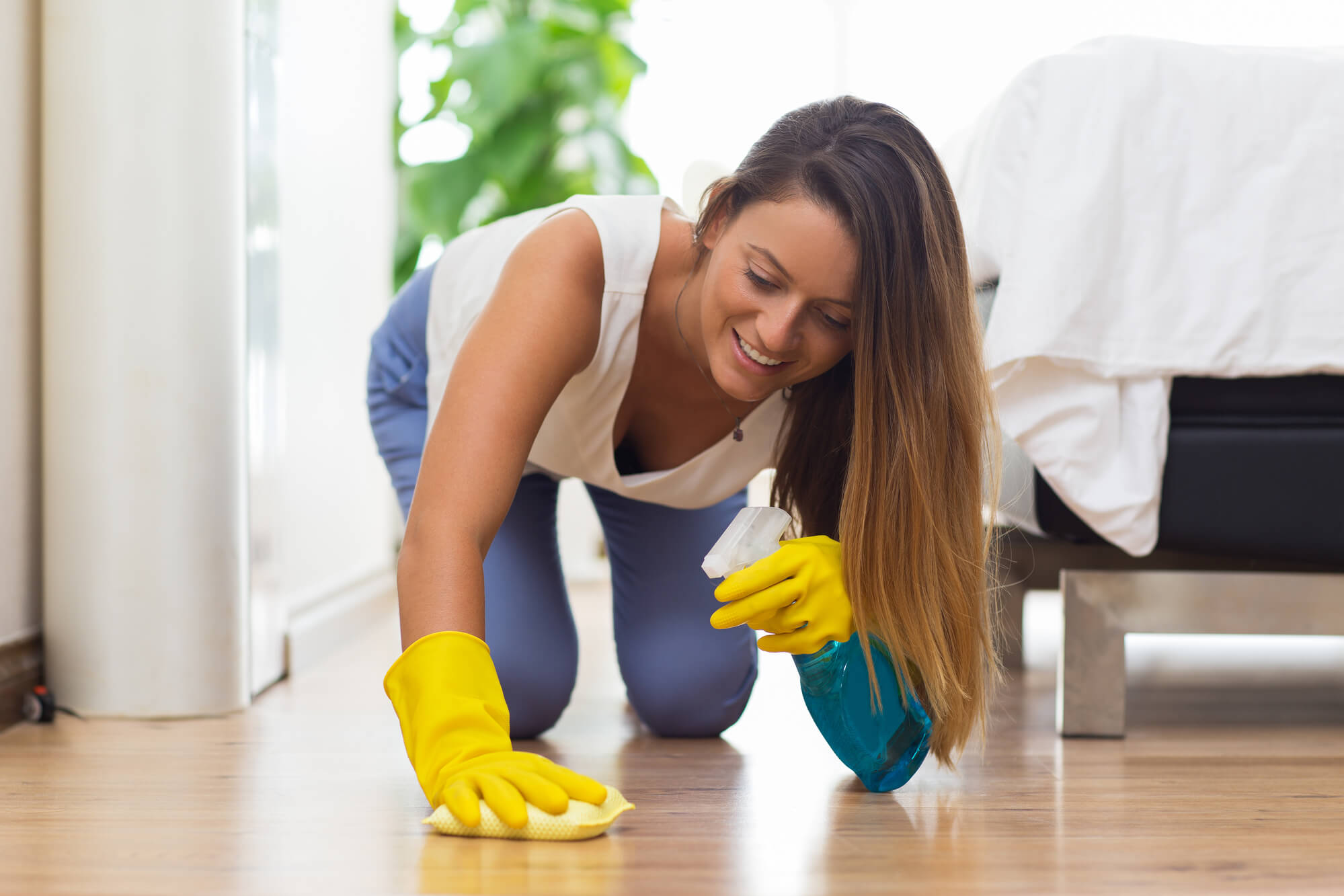
Hardwood Flooring Cleaning Guide
Hardwood flooring is a timeless choice that adds warmth and elegance to any home. However, it requires more attention and care than vinyl or laminate to maintain its natural beauty. Proper cleaning and maintenance are essential to preserving the wood and preventing damage.
Daily Cleaning
Daily cleaning is crucial for maintaining hardwood floors. Dust and dirt can easily accumulate on the surface, and if not removed promptly, they can cause scratches and dull the finish. To prevent this, sweep or vacuum the floor daily using a soft-bristle broom or a vacuum with a floor-brush attachment. Be sure to avoid vacuums with a beater bar, as this can damage the wood.
A dry dust mop is also an excellent tool for daily cleaning, as it can pick up fine dust particles without leaving any residue behind. If you encounter any spills, wipe them up immediately with a dry or slightly damp cloth to prevent moisture from penetrating the wood.
Weekly Maintenance
In addition to daily cleaning, hardwood floors benefit from a more thorough cleaning once a week. For this, use a microfiber mop along with a wood floor cleaner. It’s important to choose a cleaner that is specifically formulated for hardwood floors, as using the wrong type of cleaner can damage the wood or leave a dull residue.
When mopping, be sure to wring out the mop thoroughly so that it is only slightly damp. Avoid using excessive water, as this can cause the wood to swell or warp over time. Mop in the direction of the wood grain to prevent streaks and ensure a smooth finish.
After mopping, dry the floor with a clean, dry cloth or a dry mop to remove any remaining moisture and prevent water spots. This step is particularly important in areas with high humidity, as moisture can cause hardwood floors to expand and contract.
Seasonal Care
Wood floors are sensitive to changes in temperature and humidity, which can cause them to expand and contract. To prevent damage, it’s important to maintain a consistent indoor environment. In the winter, when indoor air tends to be drier, consider using a humidifier to add moisture to the air. In the summer, when humidity levels are higher, a dehumidifier can help to keep the air dry and prevent the wood from swelling.
It’s also a good idea to place mats or rugs in high-traffic areas and near entrances to reduce wear and tear on the floors. Be sure to use mats with a non-slip backing that won’t damage the wood.

Tile Flooring Cleaning Guide
Tile flooring is another durable option that is relatively easy to maintain. It’s commonly used in kitchens, bathrooms, and other areas where water is present. While tile is resistant to moisture and stains, it does require specific care to keep it looking its best.
Daily Cleaning Routine
Sweeping or vacuuming tile floors daily is essential to prevent dirt from getting ground into the grout lines. A dry dust mop can also be used for quick cleanups. When vacuuming, use a hard floor setting or an attachment designed for tile to avoid scratching the surface.
If you encounter any spills, wipe them up immediately to prevent staining. Tile is resistant to most stains, but grout can be more porous and may absorb liquids if not sealed properly.
Weekly Maintenance
To keep your tile floors looking their best, a weekly cleaning routine is recommended. Mop the floor with a mild detergent and warm water, using a microfiber mop or a sponge mop. Be sure to avoid using abrasive cleaners, as these can scratch the surface of the tiles.
After mopping, rinse the floor with clean water to remove any soap residue, and dry it with a clean cloth or a dry mop to prevent water spots. This step is particularly important in areas with hard water, as mineral deposits can leave behind unsightly stains.
Grout Care
Grout lines are often the most challenging part of maintaining tile floors. Over time, grout can become stained, especially in areas that are frequently exposed to moisture, dirt, or spills. Regular cleaning is essential to prevent stains from setting in.
To clean grout, mix a paste of baking soda and water. Apply the paste to the grout lines and let it sit for a few minutes to break down the dirt and stains. Then, use a toothbrush or a small scrub brush to scrub the grout. For tougher stains, a mixture of vinegar and baking soda can be more effective. After scrubbing, rinse the area with clean water and dry it thoroughly.
For long-term maintenance, consider sealing the grout lines. Grout sealers create a protective barrier that helps prevent stains and makes cleaning easier. Sealing should be done every six months to a year, depending on the amount of foot traffic in the area.
Pro Tip: Avoid using harsh chemical cleaners or abrasive tools on your tile floors, as these can damage both the tile and the grout. Stick to gentle, pH-neutral cleaners and soft brushes for best results.
Carpet Flooring Cleaning Guide
Carpet is a cozy and comfortable flooring option that adds warmth and softness to any room. However, it requires regular maintenance to keep it looking fresh and clean. Dust, dirt, and allergens can easily become trapped in carpet fibers, making it important to follow a consistent cleaning routine.
Daily Cleaning Routine
Daily vacuuming is the most effective way to keep your carpets clean and free of dirt and debris. A high-quality vacuum cleaner with strong suction and a rotating brush is essential for lifting dirt from deep within the carpet fibers. For high-traffic areas, consider vacuuming twice a day to prevent dirt from being ground into the carpet.
When vacuuming, use slow, deliberate strokes to allow the vacuum to pick up as much dirt as possible. Pay extra attention to corners, edges, and areas under furniture, where dust and dirt can accumulate.
In addition to vacuuming, consider using a carpet rake to lift and restore the carpet fibers. Carpet rakes help fluff up the carpet and remove dirt that may be trapped beneath the surface. This is especially useful for carpets with long or thick fibers.
Weekly Maintenance
In addition to daily vacuuming, your carpets will benefit from weekly maintenance. Spot cleaning is essential for treating spills and stains before they set in. For fresh spills, blot the area immediately with a clean, dry cloth to absorb as much liquid as possible. Avoid rubbing, as this can push the stain deeper into the carpet fibers.
For tougher stains, use a carpet cleaner specifically designed for the type of stain you’re dealing with. Always test the cleaner on an inconspicuous area first to ensure it doesn’t discolor the carpet. Apply the cleaner to the stain and blot with a clean cloth, working from the outside of the stain toward the center to prevent spreading.
Once the stain is removed, rinse the area with a small amount of water and blot dry. Avoid using excessive water, as this can saturate the carpet and lead to mold or mildew growth.
Deep Cleaning
Even with regular vacuuming and spot cleaning, carpets benefit from deep cleaning to remove embedded dirt, allergens, and odors. Deep cleaning should be done at least once every six months, or more frequently if you have pets, children, or allergies.
There are several methods for deep cleaning carpets, including steam cleaning, dry cleaning, and shampooing. Steam cleaning, also known as hot water extraction, is the most effective method for deep cleaning carpets. It uses hot water and a cleaning solution to loosen dirt and debris, which is then extracted by a powerful vacuum.
Dry cleaning uses minimal moisture and a special cleaning compound that is worked into the carpet fibers and then vacuumed up. This method is quicker than steam cleaning and allows the carpet to be used almost immediately after cleaning.
Shampooing involves applying a foamy cleaner to the carpet and scrubbing it in with a machine. The foam lifts dirt from the carpet fibers, which is then vacuumed up once the foam dries.
For the best results, consider hiring a professional carpet cleaning service. Professionals have access to powerful equipment and cleaning solutions that can achieve a deeper clean than household machines.
Pro Tip: To extend the life of your carpet, consider implementing a no-shoes policy in your home. Shoes can track in dirt, debris, and bacteria, which can get trapped in carpet fibers and cause wear over time. Providing guests with slippers or indoor shoes is a simple way to protect your carpets.
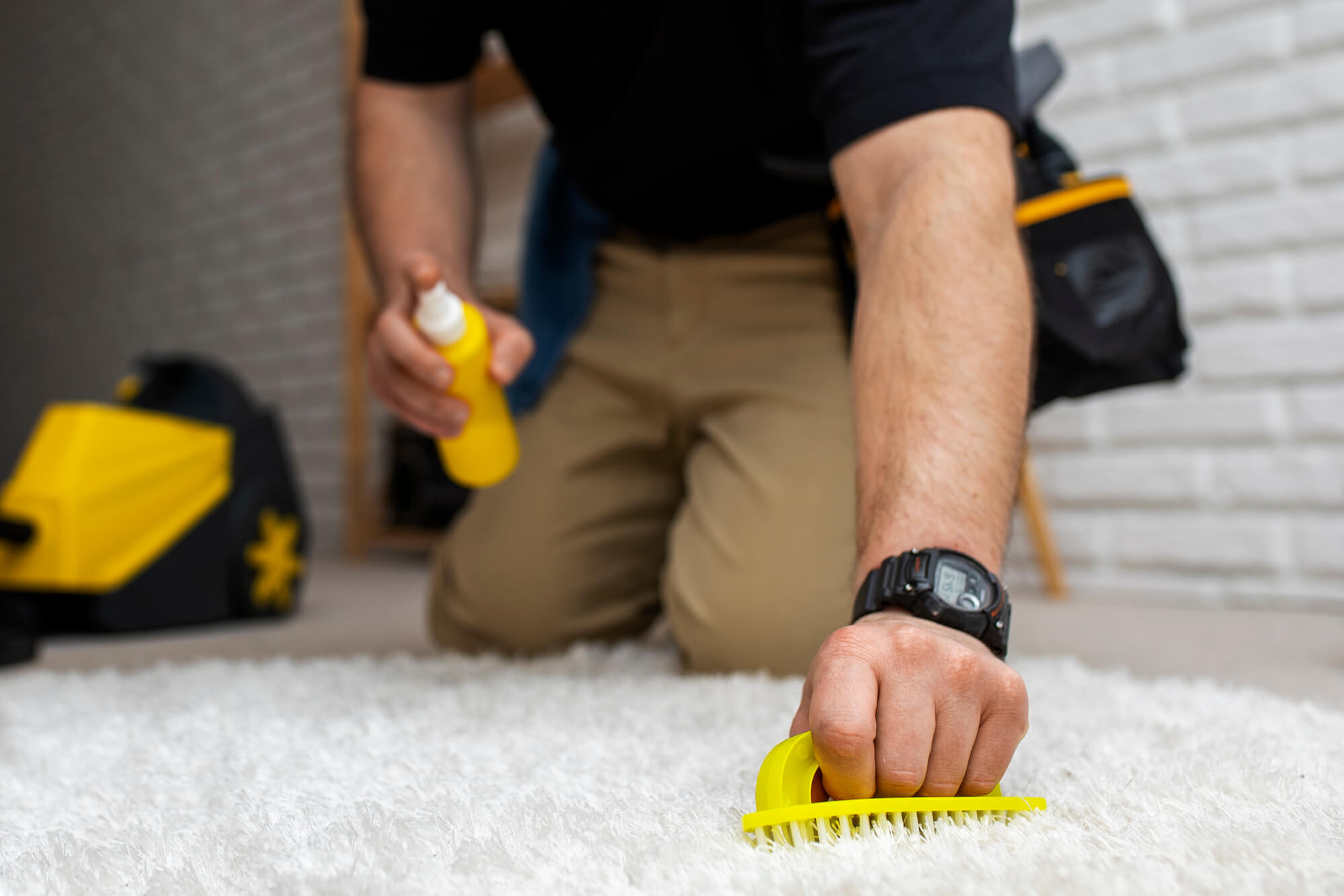
Stone Flooring Cleaning Guide
Stone flooring, such as marble, granite, or slate, adds a luxurious and timeless appeal to any home. However, stone floors require special care to maintain their natural beauty and prevent damage.
Daily Cleaning Routine
Daily sweeping or dust mopping is essential to keep stone floors free of dirt and debris. Stone surfaces are susceptible to scratches, so it’s important to remove any abrasive particles that could cause damage. Use a soft-bristle broom or a microfiber dust mop to gently clean the surface.
For added protection, place mats or rugs at entryways to reduce the amount of dirt and grit that gets tracked onto the stone floor.
Weekly Maintenance
When it’s time to mop your stone floors, use a pH-neutral cleaner specifically formulated for natural stone. Avoid using acidic or alkaline cleaners, as these can etch or dull the surface of the stone. Dilute the cleaner in water according to the manufacturer’s instructions, and use a damp mop to clean the floor. Rinse the floor with clean water afterward to remove any residue, and dry it with a soft towel or cloth to prevent water spots.
Stain Removal
Stone floors are porous and can absorb stains if not properly sealed. For stains on stone surfaces, it’s important to act quickly. Blot the stain with a clean, dry cloth to absorb as much of the spill as possible. Avoid rubbing, as this can spread the stain and push it deeper into the stone.
For organic stains (such as coffee, wine, or food), mix a paste of baking soda and water and apply it to the stain. Cover the area with plastic wrap and let it sit for 24 hours. The baking soda will draw the stain out of the stone. After 24 hours, remove the paste, rinse the area with water, and dry it thoroughly.
For oil-based stains, such as grease or cosmetics, use a poultice made of baking soda and water or a commercial stone poultice. Apply the poultice to the stain, cover with plastic wrap, and let it sit for 24 hours before rinsing and drying the area.
Pro Tip: Seal your stone floors regularly to protect them from stains and moisture. The frequency of sealing depends on the type of stone and the level of foot traffic, but generally, sealing should be done every six months to a year.
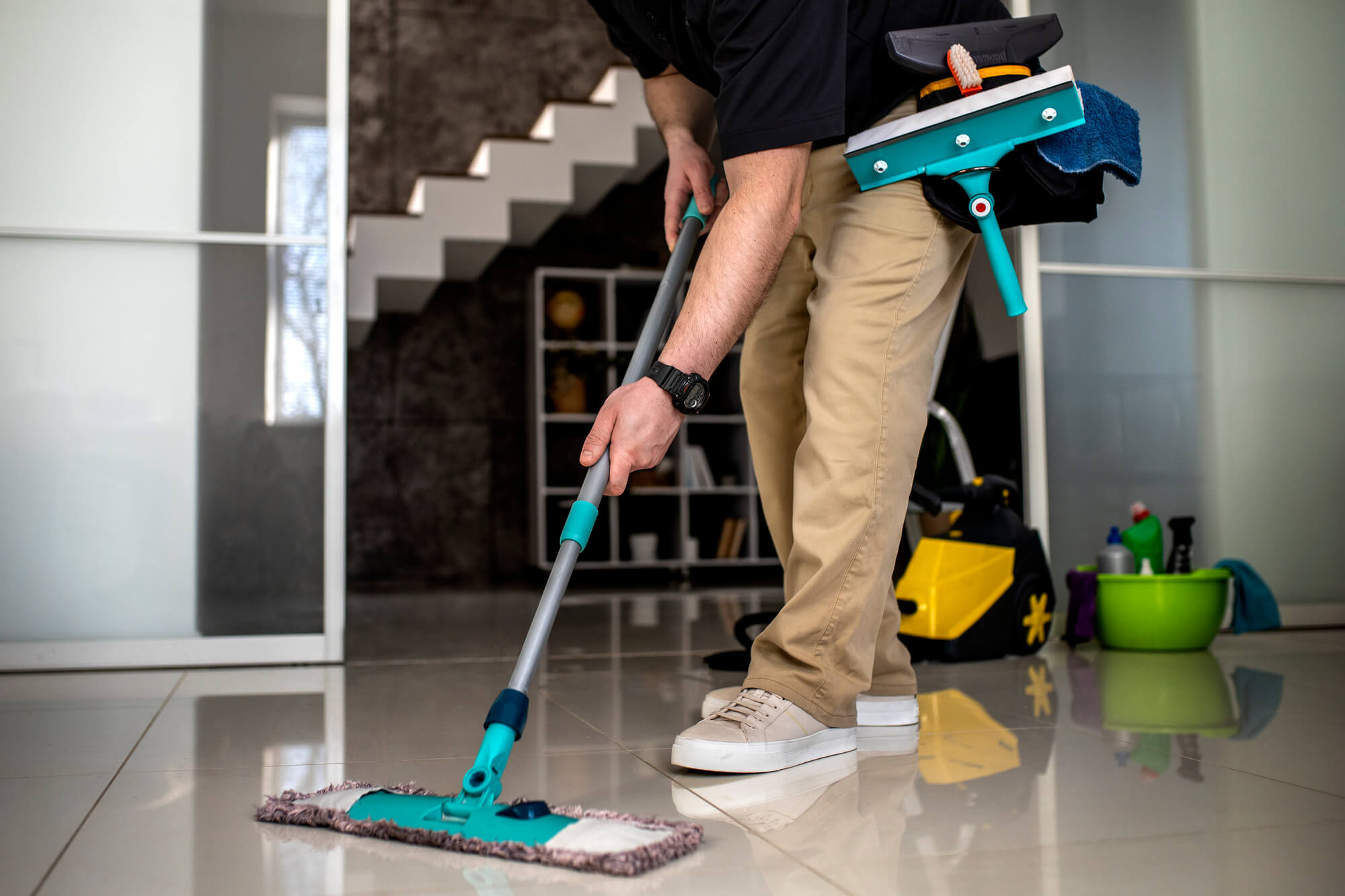
Explore Our Catalog and Installation Guide
Ready to explore the world of vinyl flooring? Check out our extensive catalog to find the perfect vinyl floor for your home. For those who prefer a hands-on approach, don’t miss our guide on how to choose flooring for DIY projects.
Conclusion
Maintaining the cleanliness and appearance of your floors is essential for preserving their beauty and longevity. While each type of flooring material requires specific care, following a regular cleaning routine will ensure that your floors remain in top condition. Whether you have tile, carpet, or stone flooring, consistent care and attention to detail will keep your home looking its best.
For more flooring options and expert advice, visit MMY Flooring. Explore our extensive catalog of vinyl flooring in Los Angeles to find the perfect fit for your home. Whether you’re looking for the durability of vinyl, the elegance of stone, or the comfort of carpet, MMY Flooring has the ideal solution for your need.

